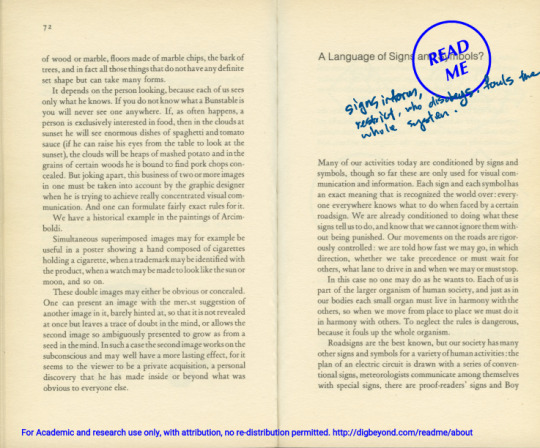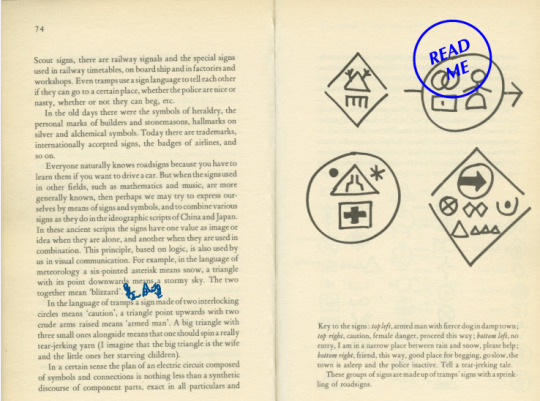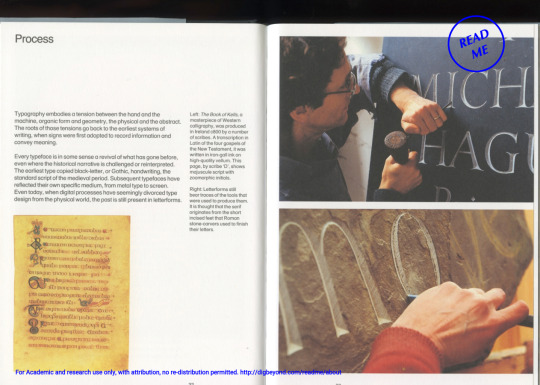#digbeyond
Explore tagged Tumblr posts
Text
week nine
Readings from [DIGBEYOND]
Intrigued by the title “It’s hard to find a good lamp”, I ended up reading from the CommDesign Studies Reader again (digbeyond.com). This book from Donald Judd (1993), a designer that is known for his minimalistic sculptures leads us through his experience of creating and the co-existence of art and furniture. “If a chair or a building is not functional, if it appears to be only art, it is ridiculous.” - (Donald Judd).
Further into the read, he goes on to explain how he wasn’t able to purchase furniture as he moved to West Texas as many pieces went out of fashion, not pleasurable to look at or moderate in price. Therefore as he creates his pieces, he continues to strive to make the furniture cheaper. Yet, making furniture cheap “requires great numbers which requires a large distribution”. This leads to department stores, yet the designer would then receive very little from this. He then spirals down this method and concludes that it makes “an impossible price”. Judd continues to explain another method that can solve this issue price, fashionable, distribution and efficiency and concludes that “the best method is small distribution”. This entire section of this book taught me to not stop at one solution, when you can find a better solution.
Attached to this reading is an interesting poster explaining Judd’s thoughts of the co-existence of art and furniture. He states that “Furniture is Furniture” and the ‘art’ that is in architecture, ceramics, textiles and many things is ‘art’. Therefore, “We try to keep the furniture out of art galleries to avoid this confusion”.
1 note
·
View note
Text
【Reading ‘A language of Signs and Symbols”】




“What is a Designer?” by Bruno Munari, 1967 in Design as Art, Penguin Publisher pp 29-33.
I really enjoy the sense of humour of Bruno Munari. The sense of humour of a wise man is always so charming and meaningful.
This passage tells a brief context of signs on how they function. Signs informs, restricts actions in our daily life. Whoever disobeys, it fouls the whole system, can sometimes be chaotic and disrespectful. Signs acknowledges the public certain common information, and also facilitates the discourse and description in respective professional realms, such as meteorology and electronics. As signs convey meaning and it is known generally, Bruno Munari proposed to tell a story or write a poem with sign. He did an attempt at the end of this chapter, which I did not get the meaning. XD
The experiment of Bruno Munari writing poem with signs reminds me of the era of Cuneiform, when information was recorded in pictorial approach, not consonantal forms. I can imagine that how much beauty we lost as we are unable to depict the meaning. What we can endorse these past creations, is only its physical appearance. The beautiful literacy of the carried information is still awaited to be decoded.
Disclaimer:
The photos were captured from DigBeyond external reading portal (Communication_Design_Studies: A Reader) prepared by Karen ann Donnachie & Andy Simionato. The annotation on the photos was made by Jingbin Ter.
Reference: http://digbeyond.com/readme/view.php?id=11
0 notes
Text
Week... what is it 10?
To start of the day we practically became mind readers. Using a starwars toy and some cool gadgets, Andy made a sensor which records the levels of concentration and relaxation of the wearer.

At the end of class we tested out Kevin’s Interface which uses a cup of water to drive a car (this was simulated using a car driving computer game, not a real car). Here’s Adam failing brilliantly, he managed to get almost half way around the loop (Girls are better drivers)

The main part of the session was dedicated to planning plant-bot’s future. More on that soon.
4 notes
·
View notes
Video
tumblr
Week 9 HCI Class Workshop - This is a short video of how our low voltage circuit worked.
3 notes
·
View notes
Photo

FINALLY i was able to get the plant bot to tweet from processing. YAY!!!
3 notes
·
View notes
Text
Furby is very emotionally attached to us
A person is asked to invert three creates: a Barbie doll, a Furby, and a biological gerbil. [The] question is simple: “How long can you hold the object upside down before your emotions make you turn it back.
While the Barbie doll says nothing, a Furby turned upside down whines and claims to be afraid, and the study finds the Furby somewhere in between alive and not:
“People are willing to be carrying the Barbie around by the feet, slinging it by the hair … no problem. … People are not going to mess around with their gerbil. … [People will] hold the Furby upside down for thirty seconds or so, but when it starts crying and saying it’s scared, most people feel guilty and turn it over.”
http://www.trevisrothwell.com/2015/01/alone-together-socializing-with-technology/
3 notes
·
View notes
Link
Playing Daft Punk on the celery, a new HCI and musical instrument!
2 notes
·
View notes
Video
PizzaTime from Artefact on Vimeo.
1 note
·
View note
Text
【Reading ‘Process’】

"Process" by Elizabeth Wilhide In Design Museum: How to Design a Typeface, Conran Octopus Ltd pp 32-33.
There is much embedded in typography. It is the physical form that carries underlying message, history movement and vibe, owing to the past events and experience. For example, when we see Helvetica, it reminds us of the standardisation, industrialisation of typography, when machinic elements join the history of disseminating information. When we see black gothic, we think of the start of printing history, the old, classical, sacred Holy Bible. Thanks to the variation of typography, it facilitates profound vibe casting in physical world. It is a carrier of meaning, implication, history and beyond its arrangement to form a word.
Disclaimer:
The photos were captured from DigBeyond external reading portal (Communication_Design_Studies: A Reader) prepared by Karen ann Donnachie & Andy Simionato. The annotation on the photos was made by JIngbin Ter.
Reference: http://digbeyond.com/readme/view.php?id=6
0 notes
Link
From Furbies to Cabbage Patch Dolls, the best toys use a variety of tricks to make us love them. Now these cues could shape future robots too.
3 notes
·
View notes
Photo

Photo prototype of a 1981 arcade game called Frogger, which we made in the first week of HCI . The prototype was designed as if it was a fully functional game. We cut out 4 paper frogs and made a paper d-pad for user input. We cut out 5 squares for the cars and 4 strips of paper which we drew logs on. We also had a game over screen which you can partially see at the top of the picture. Our design resulted in a fully functional paper prototype which we then tested. Although it was a bit awkward moving bits of paper around while someone was pressing the different input controls on the d-pad, we got it to work and the user was able to get a frog to the end.
3 notes
·
View notes
Video
youtube

Midi Sprout
https://www.kickstarter.com/projects/datagarden/midi-sprout-biodata-sonification-device/description
http://datagarden.org/
2 notes
·
View notes
Photo

Prototype development blog- THE theramin script code
This is the code i made earlier today in class. As I mentioned in a past post, this is technically the hybrid of a lightsenor, rangesensor and light theramin script thrown into one. This creates a script which both incorporates the variation in the piezo’s pitch when altered by the change in light received by the photoresistor. Therefore a working theramin :D
1 note
·
View note
Link
This is such a great tool for using Ardunio. I especially love the ability to switch between breadboard and electronic circuit views.
2 notes
·
View notes
Video
youtube
(via https://www.youtube.com/watch?v=ZXMXqULrEWg)
A beautiful piece; Lisa Park’s Eunoia II uses biosensors that detect brainwaves and translates them to sound. These sounds are played through speakers which sit beneath dishes f water creating a musical and visual performance. I’m thinking of creating a version of this, an interface that translates brainwaves to visual art in the form of colours and lines. My final prototypes will probably all have to be displayed on a computer, however this would look amazing in a dark exhibition room with the imagery displayed via projection on a wall. Perhaps this will be achievable in the cave?
1 note
·
View note